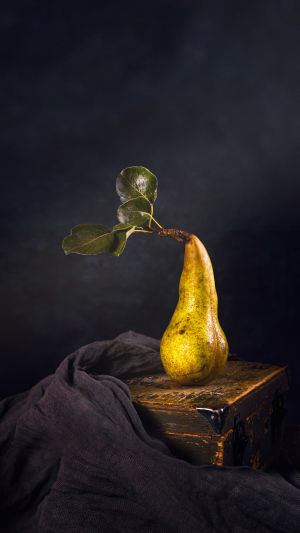The pear (Pyrus communis) is a deciduous tree native to Europe and western Asia. It belongs to the genus Pyrus within the Rosaceae family.
As an ancient fruit tree, the pear has been widely cultivated across the globe and is cherished for its sweet, juicy, and nutritious fruit. The tree holds significant value not only for its edible fruit but also for its applications in medicine, horticulture, and cultural traditions.
<h3>Tree Characteristics</h3>
Pear trees typically grow to heights of 10 to 20 meters. They have a round or oval-shaped crown with thick branches often adorned with short thorns.
Initially smooth and gray or brown, the bark becomes increasingly rough and cracked as the tree ages. The leaves are oval with finely serrated edges, a smooth surface, and distinct veins.
Spring marks the pear tree’s flowering period, producing white or light pink flowers with five symmetrically arranged petals, often blooming in clusters. Although the flowering period is brief, it is crucial for the subsequent development of the fruit.
<h3>The Fruit</h3>
The fruit of Pyrus communis is perhaps its most renowned feature. Typically spindle-shaped or spherical, the fruit has thin, juicy skin ranging from light green to golden yellow.
As the pear matures, small spots may appear on its skin. The flesh of the pear is sweet, delicate, and rich in vitamin C, dietary fiber, and essential minerals, offering various health benefits.
Pear can be consumed fresh or used in a wide range of culinary applications, including jams, juices, and dried fruits. They are also commonly incorporated into desserts and other dishes, adding a sweet, succulent flavor.
<h3>Cultivation and Care</h3>
Growing pear requires specific climate and soil conditions. The tree thrives in temperate climates and prefers a sunny, well-drained environment. While not particularly demanding regarding soil, it grows most vigorously in loam or sandy loam rich in organic matter.
Pear trees are generally planted in the autumn. Following winter dormancy, during which the tree requires low temperatures, it rapidly sprouts, flowers, and bears fruit in the spring.
Pruning is a critical aspect of pear tree care, influencing both the growth of the tree and the quality of the fruit. Effective pruning improves light penetration and air circulation, encourages the growth of new shoots, and enhances overall fruit yield.
<h3>Pest and Disease Management</h3>
Pests and diseases present significant challenges in the cultivation of pears. Common diseases such as black spot, rust, and fire blight can severely affect leaves, fruit, and even entire trees.
Integrated pest management (IPM), which combines physical, chemical, and biological methods, is often employed to control these issues. For instance, timely pruning of infected branches, proper fertilization, and the application of fungicides can help manage disease spread.
In terms of insect pests, the pear borer and aphids are among the most damaging, as they sap nutrients or damage the fruit, adversely affecting both quality and yield. Regular pesticide application or the introduction of natural predators for biological control are effective strategies for managing these pests.
As an essential fruit tree, the pear is cultivated extensively worldwide. It provides not only a nutritious and delicious fruit but also holds a significant place in history, culture, and the agricultural economy.
With proper cultivation practices and effective pest and disease management, the yield and quality of pear fruit can be substantially improved, further contributing to the growth of the pear industry.





